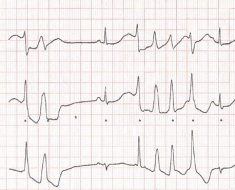Asthma outcomes still vary widely across England and appear to be influenced by region and affluence despite falling rates of asthma deaths, emergency hospital admissions and prevalence, suggests a study published in the journal Thorax.
However, it appears that amongst younger people, asthma deaths rates are falling in the poorest parts of the population compared with the wealthiest.
The UK has among the highest asthma mortality rates of high-income countries globally in younger age-groups (people aged 5-34 years), the highest asthma admission rates in Europe and the highest rates of asthma symptoms globally in children.
Socio-economic status is generally accepted as playing a significant role in reported asthma symptoms, doctor-diagnosis, hospital admission rates and mortality.
The National Review of Asthma Deaths (NRAD), a confidential review of asthma deaths, found that despite improved asthma care in recent decades many deaths were still preventable.
The NRAD did not address socio-economic status or geographical trends, so a team of researchers from the universities of London and Edinburgh updated and extended earlier reviews to consider trends by deprivation and region.
The researchers used data on asthma deaths in England during the period 2002-2015 obtained from national deaths registers, emergency asthma admissions from Hospital Episode Statistics for England, and prevalence of asthma from the Health Survey for England.
Results showed that in England, there were more than 14,800 recorded asthma deaths between 2002 and 2015. There were 1,424 such deaths in 5-44 year-olds, 3,993 deaths in 45-74 year-olds and 9,388 in those aged over 75.
There were 542,877 emergency asthma admissions over the age of 5 years from 2001 to 2011 while the Health Survey for England showed that out of 12,077 people over the age of 5 years, 1,156 reported having been diagnosed and treated for asthma and 721 reported severe symptoms of asthma in the last year.
Analysis of the results showed that asthma mortality fell among more deprived groups at younger ages—among 5-44 year-olds, people in the most deprived areas had a 19% lower mortality rate than people in the most affluent areas.
However, in older adults, this pattern was reversed with 45-74 year-olds in the poorest areas having a 37% higher asthma mortality rate than people in the richest areas, and people aged over 75 in the most deprived regions having a 30% higher death rate than people in the most affluent areas.
There were significant regional variations for all outcomes (deaths and admissions) with the highest mortality rates seen in the West Midlands for both males and females, which was about a third higher than the England average. The highest emergency admission rates occurred in the North West.
In the under 45-year-old age group, there was a more than threefold increase in asthma admissions in the most deprived areas compared with the most affluent, a doubling in the 45-74 year-olds and a 43% increase in the oldest age-band.
Differences in the prevalence of diagnosed and treated asthma as well as severe asthma showed similar patterns though these were smaller than that for admissions and greater than that for mortality.
The authors concluded: “Despite asthma mortality, emergency admissions and prevalence decreasing over recent decades, England still experiences significant socio-economic status and regional variations.
“The previously undocumented inverse relation between deprivation and mortality in the young requires further investigation.”
In an accompanying editorial, Dr. Michael Marmot of the Department of Epidemiology and Public Health at University College London, said: “Improvements in air quality, relief of crowded living conditions with ample promotion of infection and declines in smoking could all have contributed to the marked decline in mortality from respiratory conditions noted by Gupta and colleagues.
Source: Read Full Article





